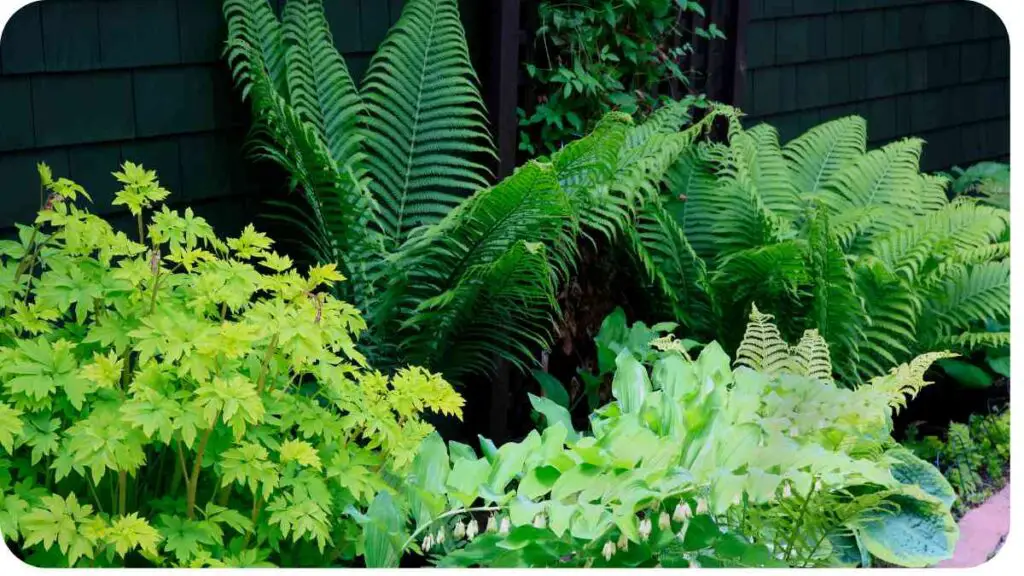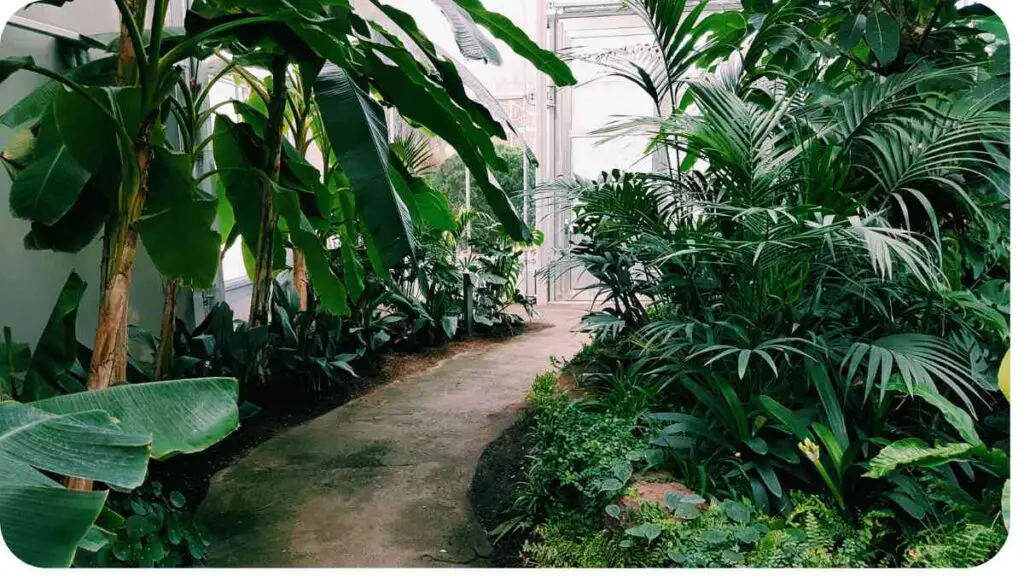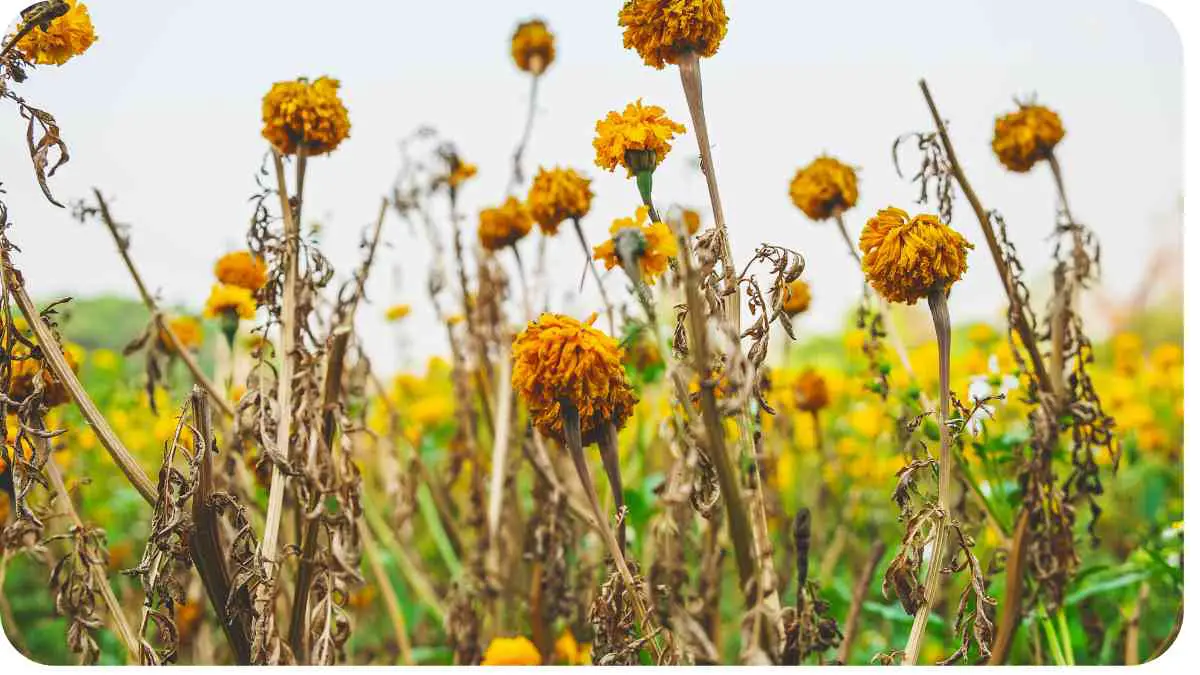Shade-loving plants add lushness and vibrancy to shady corners of gardens or indoor spaces. However, even these resilient plants can sometimes exhibit signs of distress, such as wilting leaves or stunted growth. In this comprehensive guide, we’ll explore the common causes behind shade-loving plant wilting and provide practical solutions to revive your green companions.
| Takeaways |
|---|
| Proper care practices can revive wilting shade-loving plants. |
| Understanding the specific needs of shade-loving plants is essential for maintaining their health. |
| Regular monitoring and adjustment of care regimens can prevent wilting and promote plant vitality. |
| Addressing common issues such as overwatering, poor drainage, and pest infestations is key to preventing wilting in shade-loving plants. |
| Implementing proper pruning, soil amendment, and watering techniques can create optimal growing conditions for shade-loving plants. |
Understanding Shade-loving Plants

Shade-loving plants, also known as shade-tolerant plants, thrive in low-light conditions where direct sunlight is limited or filtered. These plants have adapted to survive and flourish in shaded environments, making them ideal choices for areas with partial or full shade.
When selecting shade-loving plants for your garden or indoor space, it’s essential to consider their specific light requirements. Some varieties prefer dappled shade, while others can tolerate deep shade or indirect light. Understanding the light preferences of your plants is crucial for ensuring their health and vitality.
To revive your wilting plants effectively, it’s essential to understand the underlying causes and take appropriate actions. For comprehensive guidance, refer to this Reviving Your Wilting Plants: Troubleshooting Guide that provides step-by-step solutions for different types of plant wilting issues.
Common Causes of Shade-loving Plant Wilting
Shade-loving plants can wilt for various reasons, ranging from environmental factors to cultural care practices. By identifying the underlying cause of wilting, you can take targeted steps to revive your plants and prevent future issues.
Table 1: Common Causes of Shade-loving Plant Wilting
| Cause | Description |
|---|---|
| Overwatering | Excessive moisture in the soil can lead to root rot and suffocate plant roots. |
| Underwatering | Insufficient water supply can cause dehydration and wilting in shade-loving plants. |
| Poor Drainage | Inadequate drainage can result in waterlogged soil, leading to root suffocation. |
| Pests and Diseases | Infestations and infections from pests and diseases can weaken plants and cause wilting. |
| Low Humidity | Dry air can stress shade-loving plants, causing their leaves to wilt and curl. |
Assessing Soil Moisture Levels
Proper soil moisture is crucial for the health and vitality of shade-loving plants. Overwatering or underwatering can both lead to wilting and other symptoms of stress. To ensure optimal soil moisture levels, it’s essential to monitor the moisture content regularly.
Keeping your garden free of pests is crucial for plant health. Learn effective strategies and preventive measures in this Dealing With Pests in Your Garden: Tips and Tricks to ensure your plants remain healthy and vibrant throughout the growing season.
Table 2: Soil Moisture Levels and Their Effects on Shade-loving Plants
| Soil Moisture Level | Description | Effects on Plants |
|---|---|---|
| Soggy/Waterlogged | Excessively wet soil that doesn’t drain properly | Root suffocation, root rot, wilting, yellowing of leaves |
| Moist | Soil retains moisture but isn’t waterlogged | Healthy growth, lush foliage |
| Dry | Soil is dry and crumbly | Dehydration, wilting, stunted growth |
Identifying Pests and Diseases
Pests and diseases can wreak havoc on shade-loving plants, causing wilting, leaf damage, and overall decline in plant health. Regular inspection is key to spotting early signs of infestation or infection and taking appropriate measures to mitigate the issue.
Table 3: Common Pests and Diseases Affecting Shade-loving Plants
| Pest/Disease | Description | Symptoms | Treatment |
|---|---|---|---|
| Aphids | Small, sap-sucking insects | Curling leaves, sticky residue, stunted growth | Insecticidal soap, neem oil, natural predators |
| Powdery Mildew | Fungal disease | White powdery patches on leaves | Fungicide, improve air circulation |
| Spider Mites | Tiny arachnids | Webbing, stippled leaves, leaf yellowing | Insecticidal soap, neem oil |
| Root Rot | Fungal disease affecting roots | Wilting, yellowing leaves, root discoloration | Improve drainage, avoid overwatering |
Ensuring Proper Drainage
Poor drainage can be a significant contributor to shade-loving plant wilting. When soil becomes waterlogged, it deprives plant roots of essential oxygen, leading to root suffocation and wilting. Improving drainage in your garden beds or containers is essential for preventing waterlogged soil and promoting healthy root growth.
Providing Adequate Air Circulation
Good air circulation is vital for maintaining healthy plants, including shade-loving varieties. Stagnant air can contribute to the development of fungal diseases and create an unfavorable environment for plant growth. Prune overcrowded foliage, and strategically space plants to allow for adequate air movement around them.
Yellow leaves can indicate various plant health issues. For a thorough examination and solutions, check out this Yellow Leaves on Your Garden Plants: A Comprehensive Solution to diagnose and treat yellowing leaves in your garden.
Adjusting Light Exposure
While shade-loving plants thrive in low-light conditions, they still require some level of light exposure to photosynthesize and grow. If your plants are experiencing wilting despite being in a shaded area, they may be receiving too little light. Consider adjusting their location to a spot with slightly more indirect light while still providing protection from direct sunlight.
Selecting Suitable Shade-loving Plant Varieties

Not all shade-loving plants are created equal when it comes to their light requirements. Some varieties are more adaptable to low-light conditions, while others may prefer slightly brighter environments. When choosing shade-loving plants for your garden or indoor space, select varieties that are well-suited to the available light levels.
Table 4: Recommended Shade-loving Plants for Different Light Conditions
| Light Conditions | Recommended Plants |
|---|---|
| Dappled Shade | Hostas, Astilbes, Bleeding Hearts |
| Deep Shade | Ferns, Mosses, Coral Bells |
| Indirect Light | Peace Lilies, Pothos, Snake Plants |
Pruning and Maintenance Tips
Regular pruning is essential for promoting airflow, removing dead or diseased foliage, and shaping shade-loving plants for optimal growth. Remove any wilted or yellowing leaves, as well as any overcrowded or tangled branches. Additionally, remove any weeds or debris that may be competing for resources with your plants.
Soil compaction can severely impact plant growth by restricting root expansion. To mitigate this problem and promote healthier plants, explore the Dealing With Soil Compaction: Tips for Better Plant Growth which offers practical advice and techniques to improve soil structure.
Improving Soil Quality
Healthy soil is the foundation of thriving plants. Amend your soil with organic matter, such as compost or aged manure, to improve its structure and fertility. This will help ensure proper drainage, water retention, and nutrient availability for your shade-loving plants. Conduct soil tests periodically to monitor pH levels and nutrient content, and adjust as needed.
Watering Techniques for Shade-loving Plants
Watering is a critical aspect of caring for shade-loving plants, but it’s essential to do so judiciously to avoid overwatering or underwatering. Water your plants deeply and infrequently, allowing the soil to dry out slightly between waterings. Use a watering can or hose with a gentle spray attachment to deliver water directly to the base of the plants, avoiding wetting the foliage, which can promote fungal diseases.
Protecting Shade-loving Plants from Extreme Temperatures
Shade-loving plants are often more sensitive to temperature extremes than their sun-loving counterparts. During periods of extreme heat or cold, provide additional protection for your plants to help them weather the conditions. Use shade cloth or row covers to shield plants from intense sunlight or frost, and consider mulching around the base of plants to regulate soil temperature and moisture levels.
Monitoring and Adjusting Care Regimen
Finally, regular monitoring of your shade-loving plants is key to maintaining their health and vitality. Keep an eye out for any signs of wilting, pest infestations, or disease symptoms, and take prompt action to address any issues that arise. Adjust your care regimen as needed based on the specific needs of your plants and the conditions in your garden or indoor space.
Fungal diseases are common plant ailments that can be challenging to manage. This Identifying and Treating Fungal Diseases in Plants guide provides detailed information on identifying symptoms and implementing effective treatments to protect your plants from fungal infections.
Conclusion
Addressing shade-loving plant wilting requires a comprehensive approach that considers various factors influencing plant health. By understanding the unique needs of shade-loving plants and identifying potential stressors, gardeners can implement effective solutions to revive wilting specimens.
Throughout this guide, we’ve emphasized the importance of proper soil moisture, light exposure, air circulation, and pest management in maintaining the health and vitality of shade-loving plants. By addressing common issues such as overwatering, poor drainage, and pest infestations, gardeners can create optimal growing conditions for their plants.
Practicing regular maintenance, including pruning, soil amendment, and monitoring for signs of stress or disease, is essential for long-term plant health. By adjusting care regimens based on the specific needs of individual plants and environmental conditions, gardeners can ensure their shade-loving specimens thrive.
In conclusion, with careful observation, proactive care, and timely intervention, gardeners can successfully address shade-loving plant wilting and create lush, vibrant spaces in both indoor and outdoor environments. By applying the insights and recommendations provided in this guide, gardeners can enjoy the beauty and benefits of shade-loving plants for years to come.
Further Reading
- One Reason Plants Wilt and Actions That Help: Explore one of the common reasons behind plant wilting and learn actionable steps to address it.
- Johnstown Garden Centre: A Peek at an Irish Garden Centre’s Treasures: Take a virtual tour of the Johnstown Garden Centre in Ireland and discover the treasures it holds for gardening enthusiasts.
- How to Revive a Dried Out Plant: Learn effective techniques for reviving plants that have become dehydrated and wilted, ensuring they bounce back to health.
FAQs
Why do shade-loving plants wilt?
Shade-loving plants may wilt due to factors such as overwatering, underwatering, poor drainage, or pest infestations.
How can I determine if my shade-loving plants are wilting due to overwatering?
You can check for overwatering by examining the soil moisture levels and assessing the condition of the plant’s roots. Overly wet soil and mushy, discolored roots are indicators of overwatering.
What should I do if I suspect my shade-loving plants are affected by pests?
If you suspect pest infestations, inspect the plants for signs of pests such as aphids, spider mites, or fungal diseases. Implement appropriate pest control measures such as using insecticidal soap or neem oil.
Is it possible to revive wilted shade-loving plants?
Yes, wilted shade-loving plants can often be revived with proper care and attention. Adjusting watering practices, improving soil drainage, and addressing any pest issues can help rejuvenate wilting plants.
How can I prevent wilting in my shade-loving plants in the future?
To prevent wilting in shade-loving plants, ensure they are planted in appropriate growing conditions with adequate soil moisture, proper drainage, and suitable light levels. Regular maintenance and monitoring are also key to preventing issues before they escalate.

Hi! My name is Hellen James, and I’m here to help you with your home-maintenance needs. Whether it’s building a better yard or just trying to fix a garden—I can show you how.


